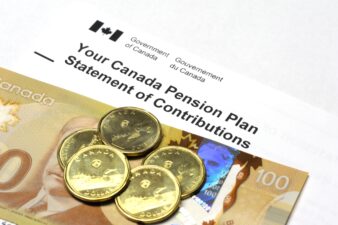When the COVID-19 outbreak sealed everyone in their homes and left a huge portion of the population without income, the Canada Revenue Agency (CRA) sprung into action. Without much delay, it launched the Canada Emergency Response Benefit (CERB) for 16 weeks from March 15 to July 3. In June, Prime Minister Justin Trudeau extended the CERB by another eight weeks to October 2.
It is a debate if the CERB will end on October 2 or it will be phased out. But I will leave this debate for another article. Today, I will discuss what’s permanent in the CRA’s benefits bank.
Three CRA cash benefits will continue, even after CERB
The CERB is a temporary benefit that the CRA created as part of the COVID-19 Economic Response Plan. This benefit was paid to all Canadians who were eligible, whether or not they filed their tax returns. But there are three cash benefits that the CRA credits into the accounts of those who file their tax returns regularly. Unlike the CERB, the CRA excludes these three cash credits from your taxable income.
GST/HST credit
The CRA gives Goods and Services Tax/Harmonized Sales Tax (GST/HST) credit to low- and mid-income individuals and families. If you are a Canadian above 19 years of age and with an adjusted net family income of less than $48,000, you can receive a GST credit between $76.35 and $451. The CRA will credit this amount into your account in four installments (July, October, January, and April).
Your GST credit amount will differ depending on your family income, marital status, and family size.
- A single individual can receive up to $451 in GST credit.
- A married couple can receive up to $592.
- Parents can receive up to $155 for every child below 19 years of age.
The CRA has paid an extra $400 GST credit in April as part of the COVID-19 response.
Canada Child Benefit
Other than GST credit, the CRA disburses Canada Child Benefit (CCB) of up to $6,400 for a child below six years of age and $5,400 for a child in the six through 17 age group. Children with disabilities get extra credit of up to $2,886. Over and above the CCB, the parents get an additional provincial child and family benefit. For instance, Alberta pays $1,155 in child care benefits for the first child.
This amount is paid to parents or guardians who are responsible for the child’s daily, medical, and child care needs. The CRA credits this cash benefit every month into the parents’ account. The CCB amount starts fading if your adjusted family income is above $31,711. The family income criteria are different for different provinces.
The CRA paid an extra $300 per child in CCB emergency payments.
Guaranteed Income Supplement
Moving ahead in the age group, the CRA gives Guaranteed Income Supplement (GIS) to Canadians above 65 years of age, with an individual income below $18,600. Only those who have lived in Canada for 10-40 years after they turned 18 are eligible for the OAS and GIS.
You can get a maximum monthly payment of $916.37 in GIS, which the CRA will credit into your account along with the OAS. The OAS is taxable, whereas the GIS is not.
The CRA paid an extra $300 in OAS and $200 in GIS as part of the COVID-19 response.
Make the best of the CRA cash credits
If you haven’t received any of the above credits, you can still receive a retroactive payment. All you have to do is file your 2018 tax returns. You can use these CRA cash credits to maximize your benefits by investing them in good-quality stocks.
A good stock for all age groups is Enbridge (TSX:ENB)(NYSE:ENB), North America’s largest pipeline operator. The company earns money from long-term oil and natural gas supply contracts. The stock is down 15% year to date, as the global lockdown has reduced oil demand and, therefore, oil supply.
The stock will rise around 20% to its normal trading price of over $51 when the economy recovers and oil demand increases. The reduced stock price has increased its dividend yield to 7.4%.
There is no better time than now to invest in Enbridge. Once the stock recovers, it will return to being a dividend stock, with average capital appreciation.







